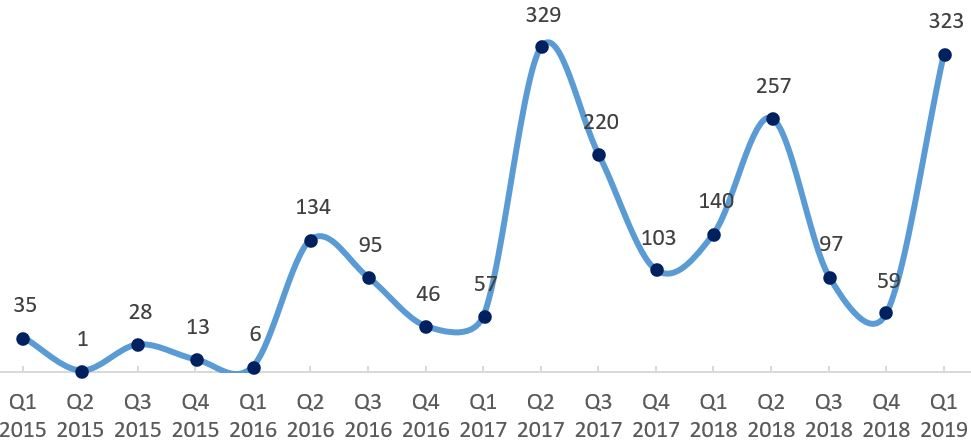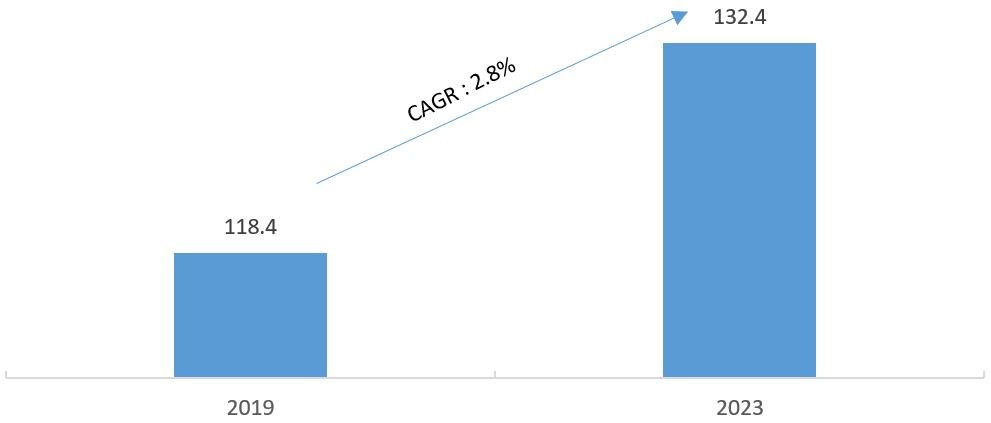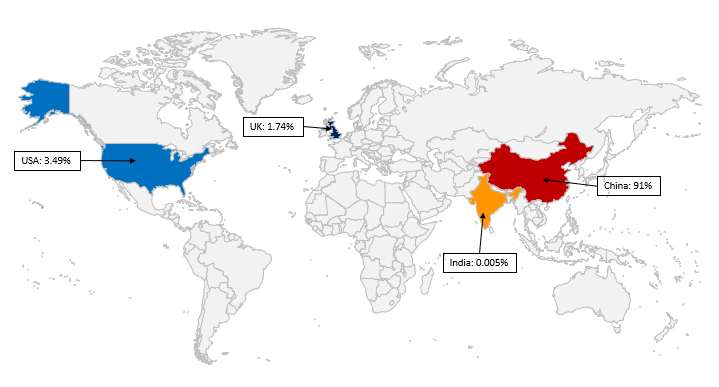The Future of Digital Lending in India
Published on 23 Jan, 2020

Digital lending is leading the FinTech revolution. Though still in the nascent stage, it has managed to gain a strong foothold in India. Various models are currently being used, as it slowly evolves and becomes sophisticated. In this article, we explore the potential of digital lending startups in India, along with factors driving growth and the role of various government initiatives to support it.
Introduction
Traditionally, lending has been a give and take transaction, wherein the lender gives some money to the borrower in return for some profit (interest) on the money. This sector was highly unorganized earlier. Over a period, it has evolved from pawnbrokers lending money by taking a collateral to be a more structured process involving banks and/or financial institutions. With the rise in technological innovations, in this case, FinTech, lending has also undergone transformation and turned ‘digital’.
Digital lending models in India
- Peer-to-Peer or P2P lending – This refers to a digital marketplace where a borrower, be it an individual or a company, is connected with a lender. No middlemen or financial institutions are involved, facilitating quick and streamlined transaction. The rates are mutually agreed upon by the two parties, while a fee is charged by the marketplace platform which can be a flat price or a percent of the transacted amount. Some examples of P2P platforms are Faircent, i2iFunding, and Lendbox.
- Paylater loans – These loans are digital credit products allowing a ‘buy now and pay later’ policy. The customer is instantly credited the required amount based on his/her spending and repayment history. These loans are of small ticket size with an interest-free repayment period, post which a late fee is charged. Some examples of this model are Amazon Pay and BajajFinserv.
- Bank-led digital platforms – These platforms are similar to digital marketplaces, wherein the lender is a bank instead of another individual/company. The bank charges interest on these loans based on their prevailing rates. Examples are Kotak Mahindra Bank’s 811 application, and HDFC Bank’s 10-second personal loan.
- Invoice financing – This model is mainly applicable for companies that are looking for working capital for their day-to-day operations. Such requirement can be met with discounting the unpaid customer’s invoices. It is used to meet short-term liquidity shortage by accelerating trade receivables. Some examples are Indifi and KredX.
Advantages of digital lending
- Transparency – FinTech companies have a transparent loan process, giving the borrower complete visibility. If a loan application is rejected, the applicant is given clear reasoning for the same, allowing the person to make amends.
- Speed – Technology enables processes like collection of borrowers’ information, its validation and disbursement of loan to become quick and seamless. Within a few days of application, a borrower can expect the loan to be credited to his account. Some FinTech players even claim to process loan within an hour also, if the information provided by the borrower is found to be correct.
- Technology and data processing – Technological innovations have refined data processing, resulting in faster and accurate output.
Growth of digital lending tech startups in India
Digital lenders are adopting technology to enhance customer experience and operate more efficiently. They use artificial intelligence and machine learning (ML) to improve customer acquisition process and reduce costs. Including alternative data for credit underwriting and adopting complex risk management solutions have led to major improvements in lending activities, including collection management and loan resolution.
Digital lenders are growing at a rapid pace, with a steady infusion of investment, both globally and in India; this is a testimony to the huge potential of this sector. The chart below elaborates the trend in startup funding over Q1 2015 to Q1 2019.
Trend in Startup funding in Indian Lending Tech startups
(QoQ; in USD mn)

Source: The Boston Consulting Group Report
In India, the transaction value of digital lending (crowd lending, business and marketplace lending, and consumer lending) is estimated to increase at a CAGR of 2.8% from approximately USD 118.4 billion in 2019 to USD 132.4 billion in 2023. As of 2019, India’s digital lending transaction value is estimated to have been just 0.005% of the global digital lending transaction value vis-à-vis market leader China’s massive 91%.
Crowd and Marketplace lending transaction value in India
(in USD mn)

Source: Statista
Country Crowd and Marketplace lending transaction value as a percentage of worldwide digital lending transaction value in 2019

Source: Statista
Factors driving growth in digital lending in India
Digital natives
Today’s generation is highly exposed to technology. It has simplified their life, especially with most of the usual activities such as ordering food or shopping going online. As per the Ministry of Statistics of India, approximately 35% of India’s population is in the age group of 15–34 years, with the Internet-savvy youth constituting most of this segment. They are the potential customers for digital lending.Big data
Over two-thirds of the world has access to mobile services and smartphones today. The boom in mobile users over a short period of time has created opportunities for many companies operating on big data. Knowledge of customers’ daily habits, buying patterns and other behavioral details has allowed companies to gain valuable insights that has further helped them in strategizing. Big data has also contributed to the FinTech revolution, enabling innovators to design as per customers’ requirements.Rise in innovative lending models
Customer-centric operating models have given the biggest boost to the digital lending space. Adoption of such models by FinTech companies, financial aggregators etc. has accelerated growth in digital lending across the globe.Supportive regulatory environment
Financial regulators are devising policies and procedures favorable to digital lending. In many developed economies, regulators have created ‘sandboxes’ to support and speed up innovations in the sector. The Indian government has also developed and implemented the India Stack, an open architecture platform for authentication and data access.
Government policies, regulations and infrastructure
Some of the key initiatives by the Indian government and regulators that have given a boost to FinTech solutions across the country are given below:
- Driving financial inclusion by the introduction of Goods and Service Tax (GST) has been a key step in formalizing the unorganized sectors of the Indian economy. Many FinTechs are leveraging the digital footprint generated from the Goods and Services Tax Network (GSTN). Separately, the Jan Dhan Yojana has resulted in a significant rise in the number of people with bank accounts in India (approximately 320 million accounts were opened under the scheme), laying the foundation for the delivery of banking services to the unbanked.
- Many FinTechs and institutions have introduced the Unified Payments Interface (UPI), a payment service, which has led to the adoption of digital payments by merchants and customers. In June 2019, the platform was used by more than 144 banks and witnessed 754 million transactions worth INR 1.46 trillion from less than half a million transactions in 2016, making it one of the largest and rapidly growing payment platforms across the world.
- The Digital India programme to improve digital literacy across the country by providing easy access to digital services has made a significant impact. It has increased digital understanding among the country’s rural population. Also, awareness of FinTech solutions has increased, boosting their usage.
- The RBI has set up a regulatory sandbox for FinTech startups. The sandbox allows real-time testing of new products or solutions in a controlled regulatory environment before a potential scale up. A first-of-its-kind initiative by the regulator in India, it is expected to encourage organizations and startups looking to enter the industry.
Conclusion
The digital landscape is shifting continuously. In India, growth is slow but steady. Moreover, our banking system has begun to tap the vast opportunities present online, facilitating easier and faster access for customers. Banks are also providing fully integrated mobile experience, wherein customers use their smartphones or tablets to do everything from opening a new account and making payments to resolving credit card billing disputes, all without ever setting foot in a physical branch.
Digital lending is a part of this dynamic environment. The huge funding received by digital lending startups over the last few years indicates its immense potential. However, compared to the pace of development in China’s digital lending space, India is still at a nascent stage. Digital lending is complex as well as constantly shifting, which makes strict categorization difficult. However, innovators continue to test, refine, and develop their business models based on customers’ needs and market experience. The Indian digital lending domain has huge potential and with the support it is receiving, it should soon catch up with its Western counterparts.
